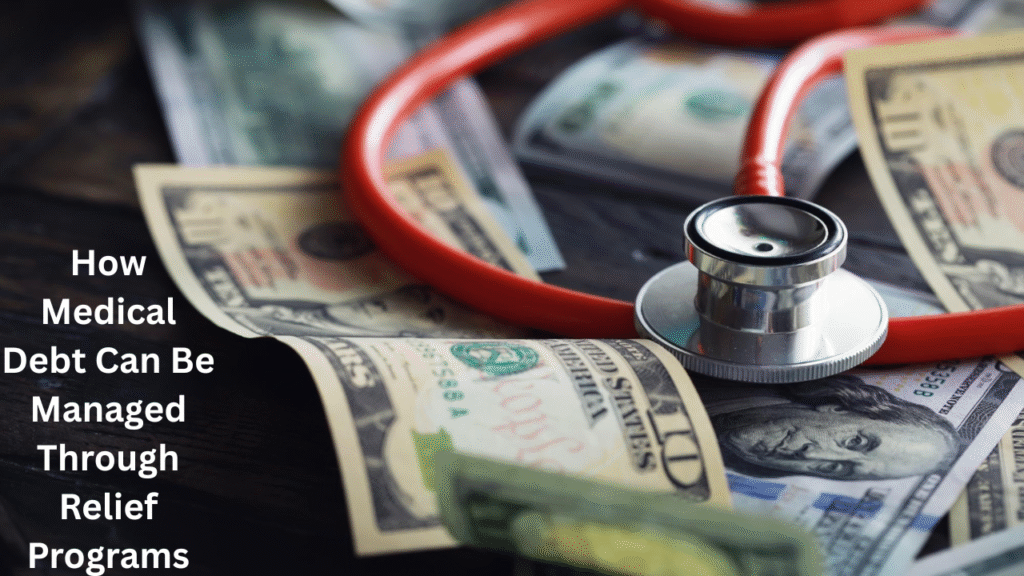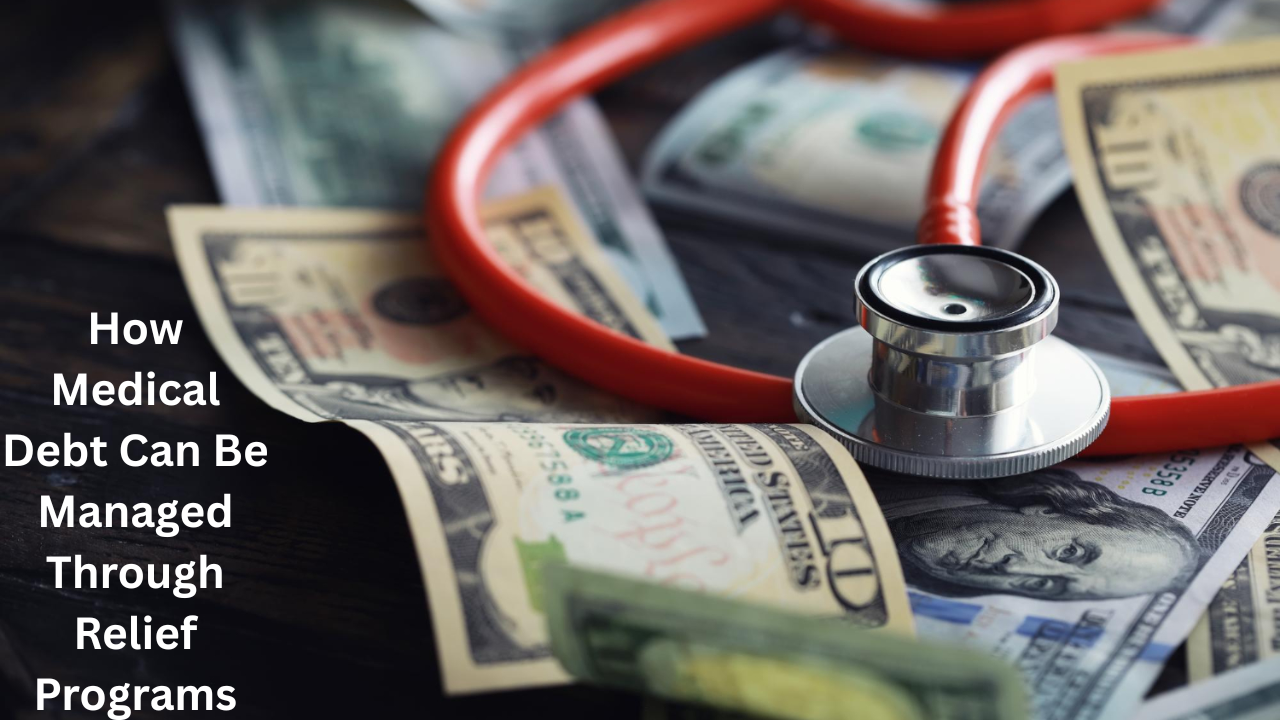
Medical debt is one of the leading causes of financial distress for millions of Americans. Even with insurance, a single emergency or chronic illness can rack up thousands of dollars in unpaid bills. If you’re struggling with healthcare-related debt, you’re not alone—and more importantly, you’re not without options.
This guide explores how medical debt relief programs work, what qualifies you for them, and how to regain financial stability.
Quick Overview: Managing Medical Debt Through Relief Programs
| Aspect | Description |
|---|---|
| Who qualifies | Low-to-moderate income individuals, uninsured, underinsured |
| Relief types | Hospital charity care, debt negotiation, nonprofit relief, payment plans |
| Key benefits | Reduces or eliminates balances, avoids collections |
| Legal protections | Fair Debt Collection Practices Act, surprise billing laws |
| Application process | Varies by program; usually requires income proof and medical bills |
| Credit score impact | Lowered or avoided if managed before default |
Understanding Medical Debt and Why It’s So Common
Medical expenses differ from other types of debt. They often come unexpectedly, with high costs for treatments, hospital stays, or surgeries—even if you’re insured.
Key Challenges:
- High out-of-pocket costs
- Insurance gaps and billing errors
- Unpredictable emergencies
- Lack of awareness about available aid
Without proper knowledge or support, many people delay treatment or skip bills, leading to collections, lawsuits, or bankruptcy.
Types of Medical Debt Relief Programs
There are several ways to reduce, eliminate, or manage medical debt through formal or informal programs. Here’s a breakdown:
1. Hospital Financial Assistance / Charity Care
Many nonprofit hospitals are legally required to offer free or reduced care to low-income patients. You can apply for charity care even after receiving treatment.
- Usually based on income and family size
- May forgive entire bill or part of it
- Some hospitals automatically screen for eligibility
2. Nonprofit Medical Debt Relief Organizations
Groups like RIP Medical Debt buy and forgive debt from hospitals or collections agencies.
- You don’t apply—these organizations target eligible debt portfolios
- Forgiveness is tax-free
- Helps the most vulnerable populations
3. Negotiating Directly With Providers
You can often negotiate your bills directly with hospitals or doctors.
- Request itemized billing to identify errors
- Offer a lump-sum settlement
- Ask for lower-cost payment plans
4. Income-Driven Payment Plans
Some providers offer low-interest or no-interest payment plans based on your income level.
- Spreads payments over time
- Helps avoid collections
- Usually requires an application or request
5. Government and State Programs
Medicaid, state health plans, or emergency assistance programs may retroactively cover services if you’re eligible.
- Check state-specific programs
- Some states protect against medical wage garnishment
Table: Medical Debt Relief Options at a Glance
| Relief Option | Who It Helps | Key Benefit | How to Apply |
|---|---|---|---|
| Hospital Charity Care | Low-income, uninsured | Free or reduced bills | Directly through hospital |
| Nonprofit Relief (RIP Medical Debt) | Vulnerable populations | Forgives full balances | No application needed |
| Direct Negotiation | Anyone with a large bill | Lowered lump sum or plan | Contact billing department |
| Payment Plans | People with steady income | Spreads cost over time | Request from provider |
| State/Federal Aid | Low-income, Medicaid-eligible | Retroactive coverage possible | Apply through health agencies |
How to Start the Medical Debt Relief Process
If you’re overwhelmed by bills, here’s a step-by-step approach:
- Review Your Bill
- Request an itemized statement
- Look for duplicate charges or errors
- Check for Financial Assistance
- Contact the hospital’s billing department
- Ask about charity care or sliding scale programs
- Gather Documentation
- Income proof (tax return, pay stub)
- Insurance records
- Residency or household info
- Negotiate the Bill
- Be polite but firm
- Suggest what you can reasonably pay
- Seek Help from Professionals
- Credit counselors or legal aid groups can guide you
- Avoid debt relief scams offering “quick fixes”
Legal Rights When Dealing With Medical Debt
Even if your debt goes into collections, you have rights:
Under the Fair Debt Collection Practices Act (FDCPA):
- Collectors can’t harass or threaten you
- They must verify the debt if you request it in writing
- You can dispute errors
Surprise Medical Bills:
Thanks to the No Surprises Act, you’re protected from surprise charges for out-of-network care in emergencies or certain in-network settings.
Pros and Cons Table
| Pros of Using Relief Programs | Cons or Considerations |
|---|---|
| May completely eliminate debt | Not all hospitals disclose programs openly |
| Can avoid collections and credit damage | Requires paperwork and persistence |
| Offers low or no-interest payment options | Relief may not cover all procedures |
| Legal protections apply | Delays in approval or eligibility limits |
Realistic Tips for Preventing Future Medical Debt
- Always ask for cost estimates before non-emergency procedures
- Know your insurance coverage and network rules
- Open health savings accounts (HSA) if available
- Consider supplemental insurance for chronic conditions
- Don’t ignore bills—early negotiation is key
3 Best One-Line FAQs
Q: Can hospitals really forgive medical debt?
Yes, many nonprofit hospitals offer charity care programs that reduce or eliminate bills.
Q: Will negotiating a hospital bill hurt my credit?
No—negotiating directly with providers won’t impact your credit score unless it goes to collections.
Q: Are there free organizations that cancel medical debt?
Yes, groups like RIP Medical Debt buy and forgive unpaid medical bills for qualifying individuals.

